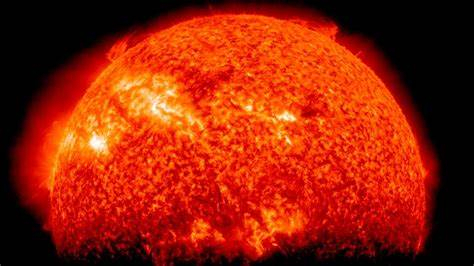Scientists at the National Oceanic and Atmospheric Administration (NOAA) have confirmed that a solar storm, ominously named the 'Cannibal' eruption, is hurtling towards Earth and is anticipated to reach us by December 1.

This cosmic event, known as a Coronal Mass Ejection (CME), results from the convergence of two earlier solar storms. In simple terms, it happens when a faster solar eruption overtakes a preceding one, creating a massive plasma wave with highly charged and tangled magnetic fields. NASA models suggest that this Cannibal CME could have a significant impact on our planet.
Dr. Tamitha Skov, a renowned space weather physicist, has emphasized the potential impact of this solar disturbance, warning of the possibility of G3 (Strong) geomagnetic storm conditions. Geomagnetic storms are disruptions in Earth's magnetosphere caused by interactions between the solar wind and our planet's magnetic field.
The last G3-class storm on November 5th not only treated the skies to vibrant auroras but also generated unusual deep-red SAR arcs. These arcs, often mistaken for auroras, represent heat energy entering the upper atmosphere from Earth's ring current system—a powerful electrical circuit encircling the planet.
Anticipating a similar spectacle, scientists suggest that the upcoming storm could extend auroral displays beyond their usual polar boundaries, potentially reaching mid-latitudes. While this would be a visual delight for skywatchers, there are concerns about potential technological disruptions.
Amateur radio enthusiasts and GPS users, especially on the night side of Earth where the storm's impact is most pronounced, may experience reception issues. In response, NOAA's Space Weather Prediction Center has issued alerts, cautioning about the possibility of G3+ conditions. Such geomagnetic activity can lead to problems with satellite navigation, low-frequency radio navigation, and intensified auroras.
Power grid operators and satellite communication providers are on high alert, preparing for potential impacts as the solar storm approaches. As the world eagerly awaits a captivating celestial display, there is a simultaneous vigilance for the potential consequences of the sun's turbulent behavior.









